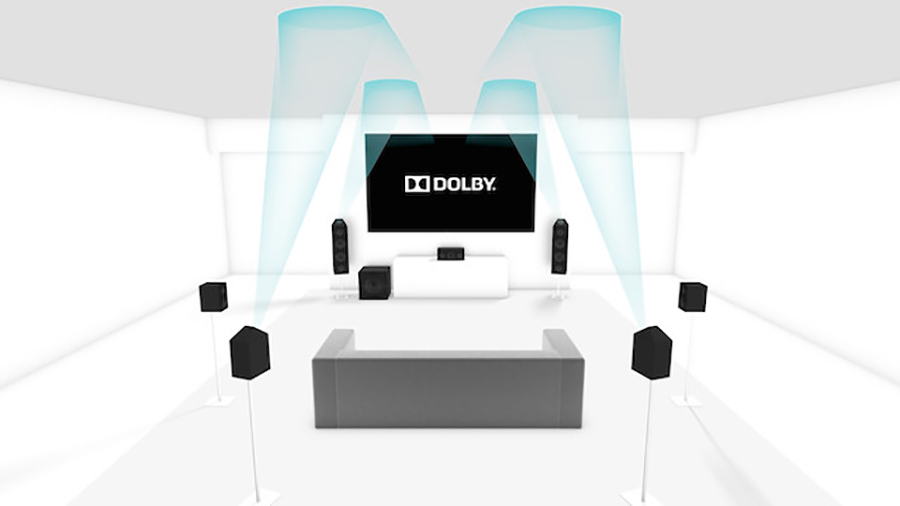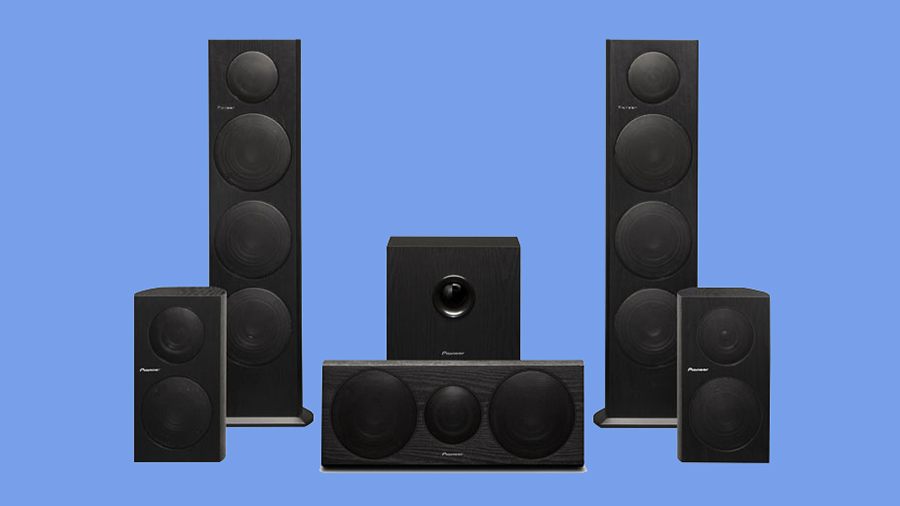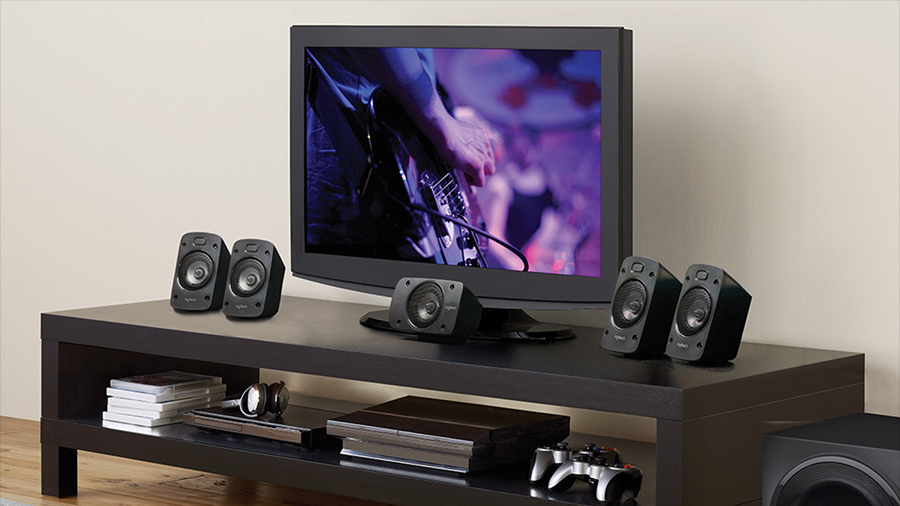

Are the movies (or games) being shown on your home cinema really getting the audio treatment that your ears deserve? There's now a huge choice of tech offering surround sound experiences, and we're here to guide you through some of the options you've got.
While surround sound kit doesn't get upgraded quite as often as your average smartphone or graphics card, there's still a lot of tech to get acquainted with, whether you're in the market for a new surround sound setup or you just want to understand the options better.
5.1, 7.1, and the history of surround sound

Surround sound is, obviously, sound that surrounds you - it can be created through physical speakers that actually sit at your sides and behind your back, or via a few clever audio tricks played by one or two speakers, though the first option is the one you want to go for if you possibly can.
You'll see terms like 5.1 and 7.1 thrown around, which simply refer to the number of speakers in a surround sound system - seven speakers and a subwoofer, for example. Various other bits of terminology get tacked on the top of this and manufacturers usually have their own proprietary standards to throw into the mix too.
Surround sound stretches back to 1940 and Disney's Fantasia, and Pink Floyd was performing surround sound concerts in the 1960s, but it's only begun to catch on in the home in the last decade or so as the tech has become inexpensive and small enough to appeal to the average consumer.
Surround sound hardware

For a true surround sound experience, you need both something created with surround sound in mind - like most modern movies and games - and the right hardware setup to play it back. You can play something like a Spotify track on a 7.1 speaker system, but there won't be eight separate audio channels encoded in it, so the effect isn't quite as good.
Many audio companies have 5.1 and 7.1 speaker systems on offer, and there are plenty of sound bars out there too that promise a kind of surround sound: basically the illusion of 360-degree audio from a single source. It's not quite as impressive but on the other hand you do have a more compact hardware setup in your living room.
Get all the latest news, reviews, deals and buying guides on gorgeous tech, home and active products from the T3 experts
Go wireless with your setup and you can avoid having cables trailing all over the place too, though you'll need to pay more and may not get the same audio fidelity. In most cases, you're also going to need an AV receiver along with your speakers, which lets you pipe multiple sources through your single speaker setup, and usually comes with a few more goodies for tweaking and processing the audio too.
Surround sound specs

As you might expect there are a bunch of terms and specifications relating to surround sound that you might come across. Take DTS-HD for example: that's a lossless surround sound format that works with HDMI and RCA connectors in a 5.1, 6.1 or 7.1 setup.
The main competing format is Dolby TrueHD, the successor to the standard Dolby Digital (lossy) surround sound codec used on DVDs and services like Netflix, and it can work with the same number of speakers and the same connectors as DTS-HD. Opinion seems split between audio enthusiasts on which is "best" - if indeed there's any discernible difference between them at all.
You might also see the familiar THX label on some surround sound kit, which is essentially another proprietary set of audio enhancements designed to guarantee a certain level of quality from your speakers. It's not a format like DTS-HD or Dolby TrueHD, but a set of guidelines for manufacturers to follow.
New standards are appearing all the time: the new Dolby Atmos format for cinemas and home theatre systems adds even more immersion to a standard surround sound set up, with extra tools for sound recorders and extra speakers for consumers to listen through.
Setting up your own system

Dive into the reviews of any surround sound system online and you'll find detailed discussions of all the points above - audiophiles certainly enjoy picking over the finer points of hardware specifications, but don't feel you have to be an expert before you start shopping around, because you can pick up a lot of the terminology as you go.
The right setup for your living room or basement cinema depends on your budget and the space you've got - the more power, the higher the sensitivity and the wider the range of frequencies the better, but the most important factor is to get a set of speakers that matches the AV receiver and other sources you're using.
The staff at the local hi-fi store will be happy to help and we'd recommend getting out onto the high street to actually listen to some of these systems before you buy anything (not that a busy store is the ideal environment for assessing speaker quality, but it can still be useful).
There are so many possible source, speaker and environment combinations out there that it's difficult to make any definitive recommendations, so you really need to make your research as detailed and specific as possible.
- Liked this? Read our explainer on MQA audio
Dave has over 20 years' experience in the tech journalism industry, covering hardware and software across mobile, computing, smart home, home entertainment, wearables, gaming and the web – you can find his writing online, in print, and even in the occasional scientific paper, across major tech titles like T3, TechRadar, Gizmodo and Wired. Outside of work, he enjoys long walks in the countryside, skiing down mountains, watching football matches (as long as his team is winning) and keeping up with the latest movies.
